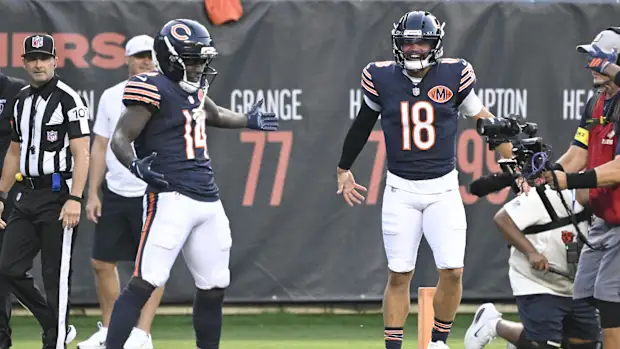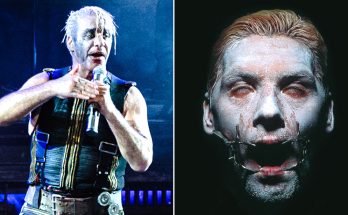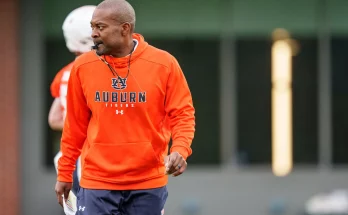Deja boo: NFL writer predicts hot Bears’ start followed by another long losing streak
The Chicago Bears are no strangers to false hope. Every few years, the NFL calendar rolls around, and somehow, this team finds a way to stir up belief. Whether it’s a promising preseason, a new coaching regime, a hyped draft class, or a splashy free-agent signing, optimism sneaks in. And right on cue, one NFL writer has added fuel to the fire by predicting the Bears will start the 2025 season hot—only to crash and burn with yet another prolonged losing streak. For Bears fans, it’s a hauntingly familiar script. Deja boo, indeed.
The prediction isn’t entirely without merit. The Bears’ schedule to open the season isn’t exactly daunting. They’ve got a few winnable games out of the gate, including matchups against teams still figuring things out at quarterback and defenses that finished near the bottom of the league last year. Add in some promising training camp chatter and a fan base hungry for anything that resembles progress, and suddenly a 3–1 or even 4–2 start doesn’t sound so far-fetched. But the writer didn’t stop there. The second half of the forecast is where things take a darker turn, and if you’ve followed the Bears for any stretch of the past decade, it hits a little too close to home.
This is a team that has made collapsing midseason into an art form. Start fast, build up some goodwill, tease the idea of contention, and then spiral. Injuries pile up. The offense dries up. The defense gets tired. The coaching staff starts pressing. And just like that, the same fans who were daydreaming about playoffs are bracing for a double-digit loss total. It’s happened before. It’s happened often. And if you listen to the national noise, it might be happening again.
The Bears’ history is riddled with these moments. In 2012, they started 7–1, only to finish 10–6 and miss the playoffs. In 2019, they came off a division-winning season and won three of their first four, then lost four straight and never recovered. Even last season, after a 2–1 start with some convincing wins, they dropped seven in a row and buried any playoff hopes by Halloween. It’s a pattern that’s almost cruel in its predictability. Hope followed by heartbreak, momentum followed by meltdown.
The reasons vary each year, but the story ends the same. One season it’s the quarterback play falling apart. Another season it’s the defense regressing or the offensive line turning into a sieve. Sometimes it’s coaching decisions that make fans want to pull their hair out. Other times, it’s just plain bad luck. But regardless of how it happens, the result is always a team that looks lost by November and a city wondering how it got fooled again.
So why is this year supposed to be any different? That’s the million-dollar question. The Bears have a new offensive coordinator, a fresh crop of rookies, and supposedly a reenergized locker room. They’ve made tweaks across the roster, patched up a few holes, and are talking the usual preseason talk. Coaches say the culture is changing. Players say the vibe is different. It always is in August. The air is warm, the pads are cracking, and nobody has lost a game yet.
But the NFL writer who dropped this bold forecast isn’t buying the long-term stability. He’s seen too many Bears seasons go sideways and sees the same ingredients brewing again. A young quarterback still trying to find consistency. A defense that might not be built to play from behind. A coaching staff under pressure to produce now, possibly making desperate in-season adjustments when things get rocky. It’s not exactly a blueprint for sustained success.
The writer’s take also touches on something deeper—what he calls the “organizational DNA” of the Bears. It’s a concept fans know all too well. The idea that this franchise, for all its history and blue-collar toughness, hasn’t truly figured out how to build a winner in the modern NFL. It’s a place where defenses are always good enough to keep games close, but offenses rarely scare anyone. Where the quarterback position has been a revolving door for decades. Where the front office has struggled to adapt to the new rules of football, still clinging to outdated formulas while other teams innovate.
Even when the Bears have talent, it’s rarely all on the same page. They’ve had elite defenses paired with anemic offenses. They’ve had mobile quarterbacks with no protection. They’ve had Pro Bowl receivers in systems that don’t get them the ball. It’s always something, and it always seems to unravel just when things start to look promising. That’s what makes the “hot start, cold finish” narrative so believable. Because in Chicago, it doesn’t take much to derail a season.
And yet, fans keep coming back. Every September, Soldier Field fills up with people wearing navy and orange, convinced that this might finally be the year. They remember the glory days—or at least the moments that felt like glory. The 1985 Super Bowl, the Devin Hester returns, the Brian Urlacher era, the brief Jay Cutler window, the Mitch Trubisky playoff run that almost was. It’s not a hopeless fan base. It’s a loyal one. But loyalty doesn’t shield you from frustration.
The worst part of the predicted storyline isn’t just the losing streak—it’s how believable it feels. Because Bears fans don’t have to imagine it. They’ve lived it. They’ve seen a 4–2 start dissolve into a 6–10 finish. They’ve watched injuries pile up. They’ve seen the same questions about the quarterback, the offensive line, the play-calling. They’ve seen games that start with optimism and end with three-and-outs, missed tackles, and field goals that come up just short.
The NFL writer’s take might not be gospel, but it strikes a nerve because it reflects the lived experience of being a Bears fan. It’s not just pessimism—it’s pattern recognition. And until this franchise proves otherwise, those patterns are hard to ignore.
Still, not everything is doom and gloom. There’s talent on this roster. The defense, while not elite, has potential. The offensive line, if it stays healthy, could be serviceable. There are weapons at receiver, and the running back room has depth. The quarterback—whether it’s a breakout year or another work-in-progress season—has shown flashes. That’s enough to build on, and that’s why a strong start feels possible. But sustaining it? That’s the part Chicago hasn’t figured out yet.
For the Bears to break the cycle, it’s going to take more than just a few early wins. It’s going to take consistency, health, better in-game management, and the ability to adapt when things get tough. The NFL doesn’t reward momentum—it rewards resilience. And if the Bears want to change their narrative, they’ll need to prove they can finish a season the way they start it.
Until then, predictions like this one will keep coming. Because it’s not just about what’s possible—it’s about what’s been proven. And right now, the Bears haven’t proven they can finish strong. They’ve only proven they can tease hope before pulling the rug out.
So yes, the prediction stings. It feels cynical. It feels like a cheap shot. But for a fan base that’s been down this road too many times, it also feels familiar. The Bears might start hot in 2025. They might even look like contenders for a moment. But unless something fundamental changes, don’t be surprised if you’re watching another season that begins with a roar and ends with a whimper.
Deja boo, indeed.



